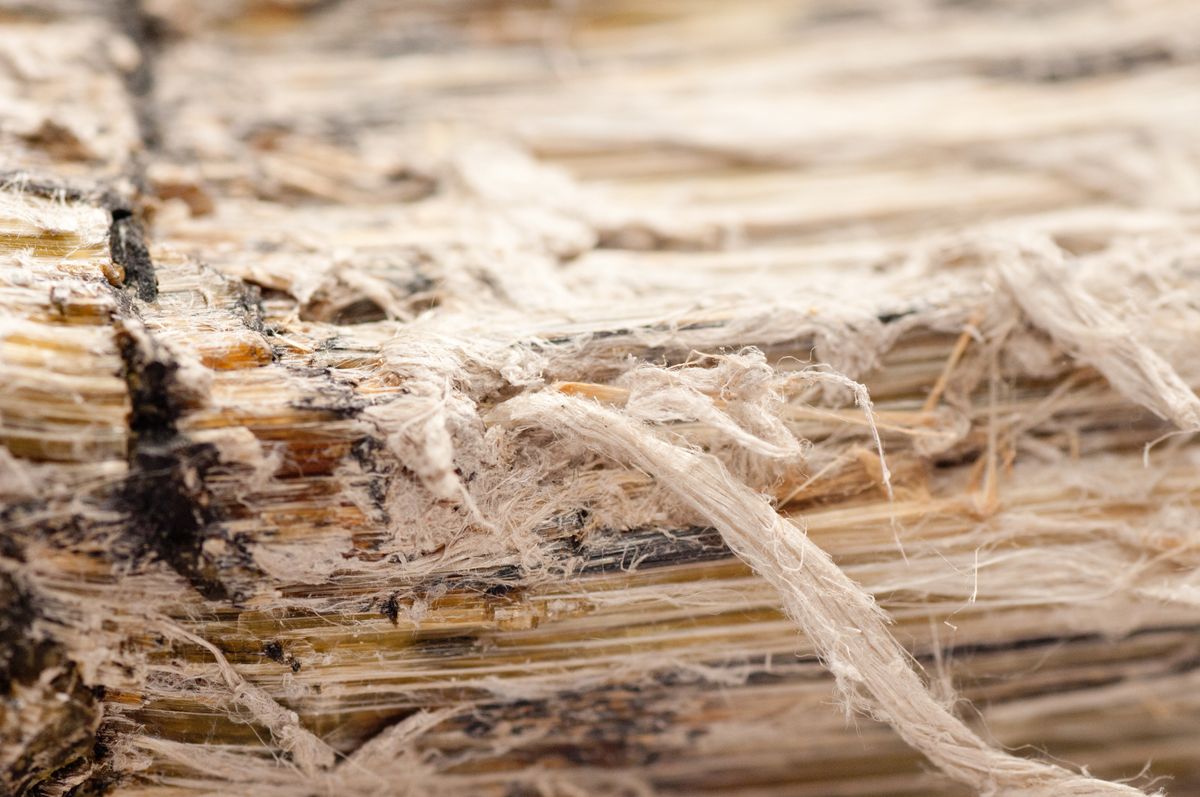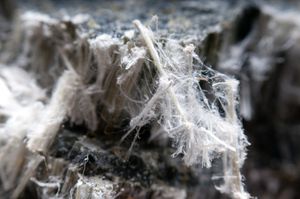FAQs

Asbestos
What is asbestos?
Asbestos is the commercial term for long, thin, fibrous crystals mined from the earth. The fibers are microscopic and can be broken into even smaller fibers when manipulated. There are two main types of asbestos - amphibole and serpentine. Under the microscope, amphibole fibres are straight, like a nail, and serpentine fibres are wavy. Amphiboles include amosite and crocidolite. These fibers are primarily from South Africa. Amosite is brown in color and was used heavily during World War II in thermal insulation aboard ships. Crocidolite is blue in color and was used in various products including cement pipe. Serpentine asbestos is called chrysotile, is white in color, was mined in the United States and Canada and was the asbestos used in the vast majority of products, thousands of products, in this country. Asbestos was used in products as a heat and fire resistant binder. It has tremendous tensile strength, stronger even than steel. It stands up to heat, chemicals and corrosive environments. This hardiness, unfortunately, is why it is bad for the human body. Once inhaled into the lungs, the fibers are so small and durable, they are not easily removed by the body where they can cause great harm. All asbestos, regardless of type, has been proven in peer-reviewed scientific and medical literature to cause all of the asbestos-related diseases: asbestosis, lung cancer, and mesothelioma.

Mesothelioma
What is mesothelioma?
Mesothelioma is a very rare cancer of the lining of the lung (pleural), stomach (peritoneum), heart (pericardial) or testicles (tunica vaginalis). Doctors call this lining the serosal membrane which is a very thin membrane covering these areas within the body. Mesothelioma is not lung cancer. Smoking does not cause mesothelioma. In North America, the overwhelming single cause of mesothelioma is exposure to asbestos. Doctors consider mesothelioma a "signal" tumor of asbestos exposure due to the strength of the association between asbestos and this type of cancer. There is a latency period between the time of first exposure to asbestos and clinical diagnosis of mesothelioma. This latency period is anywhere from as low as 10 years (rare) to over 60 years. In other words, people exposed to asbestos many decades ago may not get mesothelioma until now.
If you or a loved one has mesothelioma, you know how serious this diagnosis is. Because asbestos is the only cause of mesothelioma in North America, it is important for you to be represented by competent lawyers experienced in these cases. It is important to determine all of the potential exposures to asbestos in advancing any claim for damages, restitution, injuries, and loss of life. Proving this requires experience, knowledge of trades, hobbies, locations, buildings, products and a whole host of other things that only decades of experience in this area can provide. If you or a loved one has mesothelioma, please contact us right away to find out all available compensation avenues.

Proof



How on earth will you be able to prove how, where and to what product I was exposed to asbestos many decades ago?
We start by talking with you. We sit down and have a conversation where we learn about you, your life, your work, and your experiences. We get an understanding of where you've been, who you've worked for and the products you've come into contact with. Your hobbies, interests, and places you've been as well as the products you and your family used over the years. That's the starting point. From there, we obtain records of your work history and we obtain them quickly so we can map out your opportunities for exposure to asbestos. We tap terabytes of data we've amassed over decades of asbestos litigation to see what products were where. We search millions of pages of historic depositions, documents, scientific articles and documents produced by manufacturers. We engage investigators to research new places and interview people who may know the places you worked or worked with you in decades past. We may place ads in newspapers to find witnesses. We demand documents, discovery and depositions from defendants in the case. We issue subpoenas for records and people. In short, we leave no stone unturned in our search for the facts and circumstances of your exposure to asbestos. By the end of our investigation, we have a comprehensive understanding of your work history and the asbestos-containing products and places that exposed you to asbestos.
